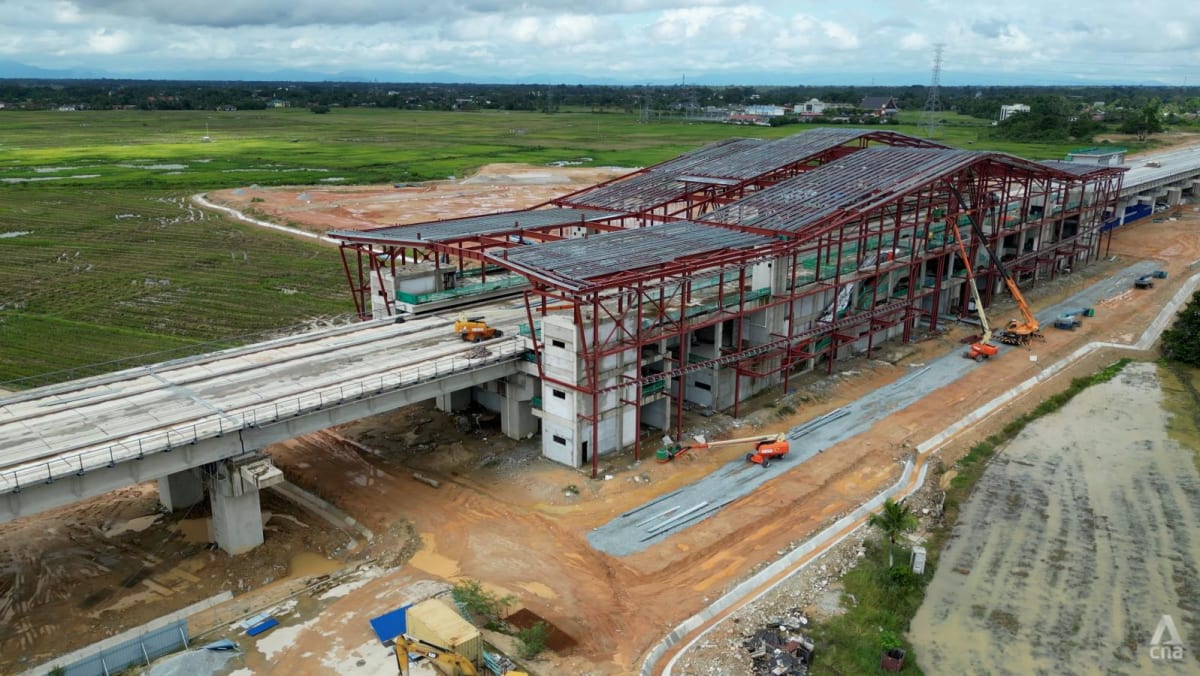Asia
Malaysia’s ECRL: Residents in opposition-controlled states laud railway’s benefits, but could it create political tension?

Introduction to ECRL-Related Flooding and Community Concerns
The East Coast Rail Link (ECRL) project has sparked a mix of hope and concern among communities in Malaysia, particularly as it relates to infrastructure development and its potential impact on local residents. In recent months, flooding incidents in areas near the ECRL construction sites have raised questions about accountability and compensation for affected households. Transport Minister Anthony Loke emphasized that the primary contractor, Malaysia Rail Link (MRL), must prioritize flood mitigation measures in flood-prone areas to minimize disruptions to local life. During a press conference last December, Loke assured that any homes affected by flooding caused by the ECRL construction would be taken care of by the contractor. However, some residents remain skeptical, citing ongoing issues despite these assurances.
Kasiah, a resident of one of the affected areas, expressed her concerns about recurring flooding. She shared videos with CNA taken on November 22 and November 28 last year, showing her neighborhood submerged in water, with children wading through ankle-deep floodwaters. Kasiah acknowledged that other communities on the east coast might have been more severely affected and thus might need assistance more urgently. However, she noted that despite a visit from state government representatives, no concrete help had been provided to her community. When asked whether her situation might influence her support for the state government, Kasiah responded uncertainly, saying, “I don’t know.” Her ambivalence reflects the broader uncertainty and frustration felt by many residents dealing with the project’s unintended consequences.
The Ongoing Struggle with Flooding and State Response
The monsoon season has exacerbated flooding concerns in Kasiah’s area, with water levels rising periodically due to heavy rainfall and, some residents suspect, inadequate drainage systems potentially disrupted by ECRL construction. The recurring flooding has disrupted daily life, with residents forced to navigate inundated streets and deal with the risks of waterborne diseases and property damage. While Minister Loke and MRL have publicly acknowledged the need for flood mitigation measures, the pace of implementation appears slow, leaving many households vulnerable to further flooding.
Kasiah’s experience highlights a broader issue: the gap between official assurances and the realities faced by communities on the ground. While state government officials have visited affected areas, many residents feel that their concerns are not being adequately addressed. The lack of tangible support has eroded trust in the government’s ability to manage the project’s social and environmental impacts effectively. For Kasiah and others like her, the ECRL’s promise of economic growth and improved connectivity is overshadowed by the immediate challenges posed by flooding and perceived inaction from authorities.
Economic Hopes and Community Engagement in Pahang
In contrast to the flooding concerns in Kasiah’s area, residents in Pahang, particularly in opposition-held state seats with ECRL stations, have expressed optimism about the project’s potential to boost local economies. One such resident is Muhd Qaiyum Ismail, a 38-year-old vendor who sells dried fruit beverages at a makeshift waterfront night market in Temerloh. Temerloh is famous for its ikan patin, a type of fatty fish dish that draws visitors from across the region. Muhd Qaiyum believes the ECRL will bring more tourists to his town, as it will provide a convenient rail link for travelers from the east coast, Kuala Lumpur, and Selangor.
Currently, Temerloh lacks direct rail services, making it difficult for tourists to reach the area. The ECRL is expected to change this, offering a faster and more accessible mode of transportation. Muhd Qaiyum envisions the railway as a catalyst for growth, not just for his business but for the entire local economy. He hopes the influx of visitors will create new opportunities for small businesses, restaurants, and hotels, fostering a more vibrant and prosperous community. However, his optimism is tempered by concerns about whether the project will truly deliver on its promises, especially given the lack of engagement between project developers and local stakeholders.
The Importance of Community Engagement in the ECRL Project
One of the recurring themes in the ECRL project is the need for greater engagement between project developers and local communities. While some residents, like Muhd Qaiyum, are hopeful about the project’s potential benefits, others remain skeptical due to a lack of communication and consultation. In many areas, including Kasiah’s community, there is a sense that the government and MRL are moving forward with the project without adequately addressing the concerns of those most directly affected.
Effective community engagement is crucial for ensuring that the ECRL project meets its intended goals while minimizing negative impacts on local residents. This includes not only addressing flooding concerns and providing compensation for affected households but also involving local stakeholders in decision-making processes. By fostering a more inclusive and responsive approach, project developers can build trust and ensure that the benefits of the ECRL are shared equitably among all communities impacted by the project.
Conclusion: Balancing Progress and Community Needs
The ECRL project represents a significant investment in Malaysia’s infrastructure, with the potential to transform connectivity and economic opportunities across the east coast. However, its success will depend on how well it balances progress with the needs and concerns of local communities. While some residents, like Muhd Qaiyum, see the project as a source of hope and opportunity, others, like Kasiah, remain uncertain due to unresolved issues like flooding and inadequate support from authorities.
To ensure the ECRL delivers on its promises, the government and MRL must prioritize flood mitigation, compensate affected households, and engage meaningfully with local stakeholders. By addressing these challenges head-on, the project can achieve its goals while fostering trust and cooperation with the communities it serves. Ultimately, the ECRL’s legacy will be shaped not just by its economic impact but by how it addresses the human and environmental dimensions of its development.